Crucial MX100 (256GB & 512GB) Review
by Kristian Vättö on June 2, 2014 3:00 PM ESTRandom Read/Write Speed
The four corners of SSD performance are as follows: random read, random write, sequential read and sequential write speed. Random accesses are generally small in size, while sequential accesses tend to be larger and thus we have the four Iometer tests we use in all of our reviews.
Our first test writes 4KB in a completely random pattern over an 8GB space of the drive to simulate the sort of random access that you'd see on an OS drive (even this is more stressful than a normal desktop user would see). We perform three concurrent IOs and run the test for 3 minutes. The results reported are in average MB/s over the entire time.
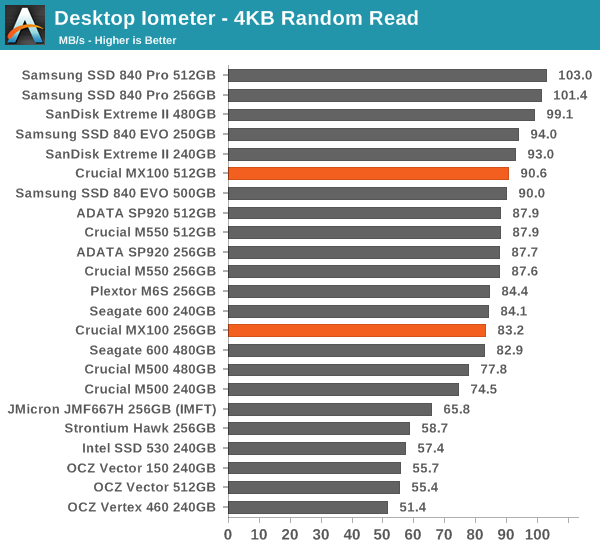
Random read performance remains mostly unchanged. The 512GB MX100 appears to be slightly faster than the M550 while the 256GB version is a few megabytes slower.
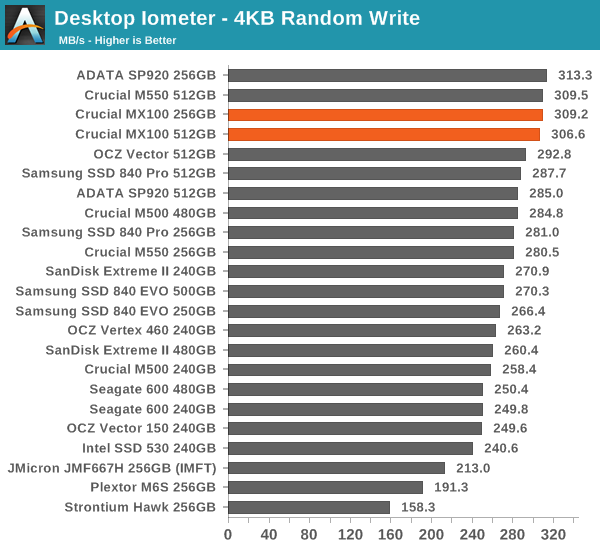

Random write performance, on the other hand, is slightly up at the lower queue depths. This is likely due to firmware optimizations as the performance is up regardless of the capacity, although once the queue depth is increased the 256GB version falls behind due to the more limited amount of NAND die.
Sequential Read/Write Speed
To measure sequential performance we run a 1 minute long 128KB sequential test over the entire span of the drive at a queue depth of 1. The results reported are in average MB/s over the entire test length.
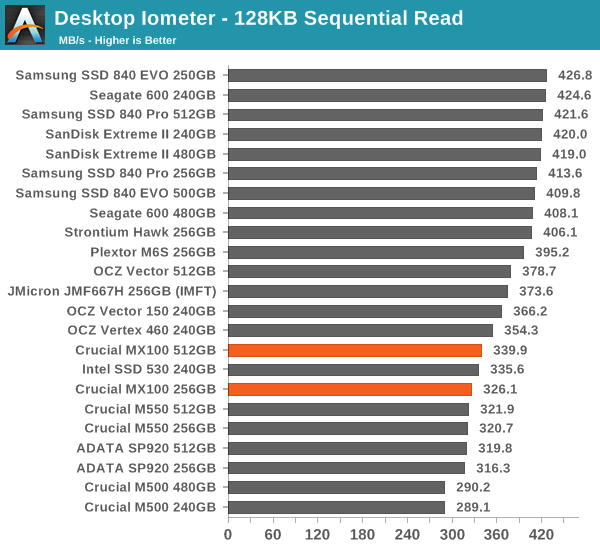
Sequential performance is also up by a bit, although the difference isn't dramatic.
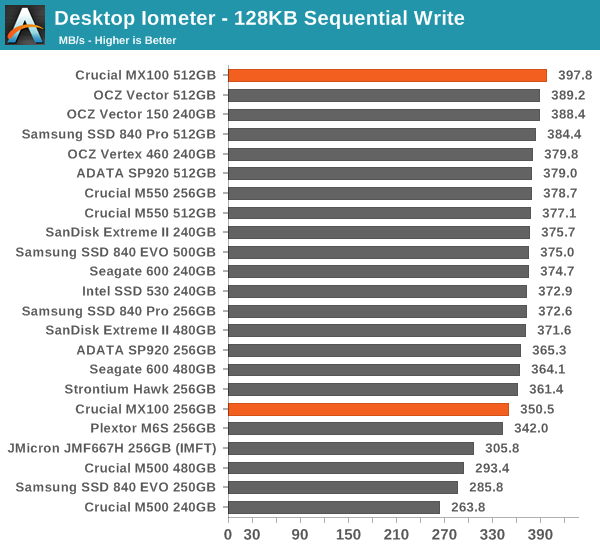
AS-SSD Incompressible Sequential Read/Write Performance
The AS-SSD sequential benchmark uses incompressible data for all of its transfers. The result is a pretty big reduction in sequential write speed on SandForce based controllers.
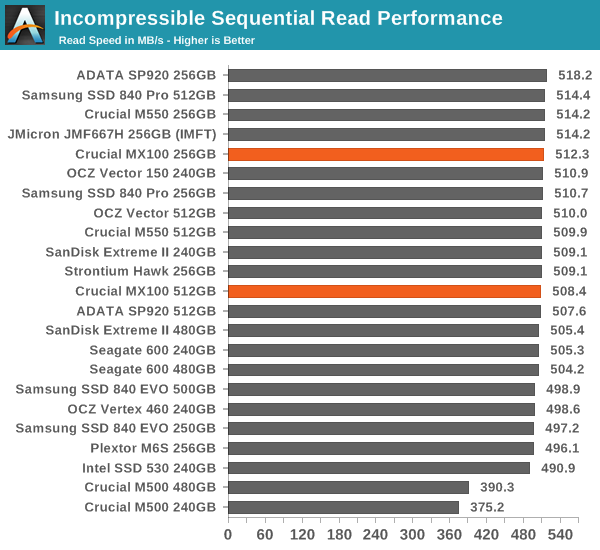
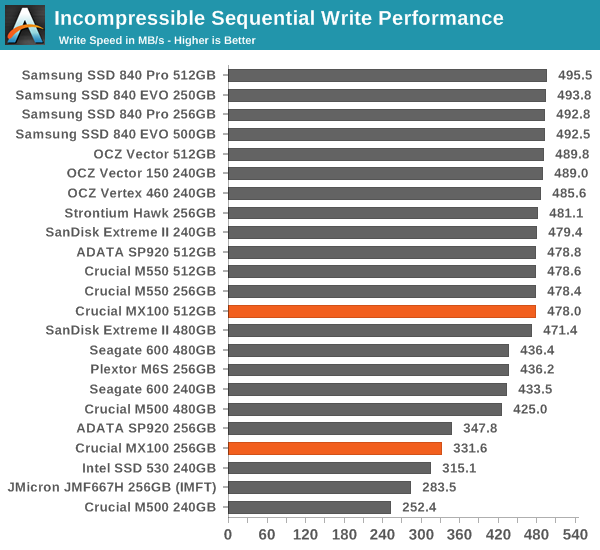










50 Comments
View All Comments
blanarahul - Monday, June 2, 2014 - link
Crucial sucks balls at making performance drives.. They should leave that market to Sandforce and Samsung, and concentrate on beating Samsung in value SSD market...hojnikb - Monday, June 2, 2014 - link
Sandforce makes performance drives ?!hahahah thats new :)
MrSpadge - Wednesday, June 4, 2014 - link
Please read the article.SmilingTornado - Thursday, June 5, 2014 - link
I am pretty sure this would be a "budget" SSD because of the $110 price tag and the fact that TigerDirect would be selling it for as little as $100 if you get a coupondanwat1234 - Monday, January 26, 2015 - link
No need for more performance than sandforce 2xxx, that pretty much eliminates the hard drive bottleneck completely for most uses in home computersEricZBA - Monday, June 2, 2014 - link
Already instock at Amazon. Sweet! http://www.amazon.com/Crucial-MX100-adapter-Intern...Hrel - Monday, June 2, 2014 - link
"Sequential Write 150MB/s 330MB/s"Why so slow? Especially when $100 drives get 550MB/s at 95k IOPS.
hojnikb - Monday, June 2, 2014 - link
Where do you have 100$ drive, that gets 550MB/ write ?!extide - Monday, June 2, 2014 - link
This is explained in the article... But it is because it uses fewer large capacity NAND dies to hit the low prices. For fast writed with NAND you need lots of dies, which is why the bigger versions of this drive see better performance.hojnikb - Monday, June 2, 2014 - link
And competitors are using nasty tricks like turbowrite or compression to achive such write speeds. But actual nand inside those mainstream drives isn't capable of such speeds.